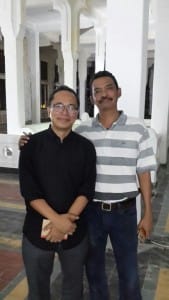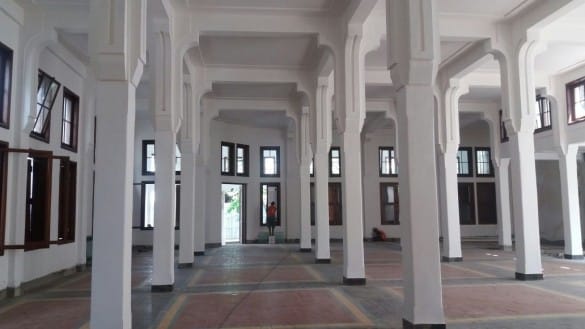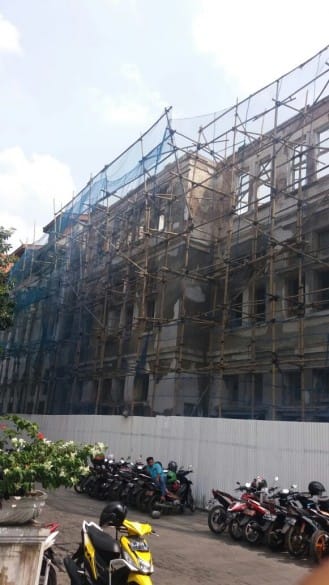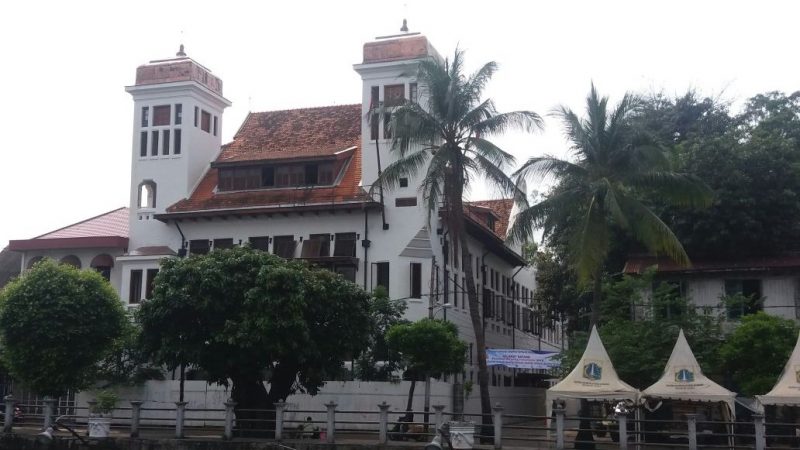Most of Jakarta is made of new developments and expanding suburbs, however look to the North and you’ll find Kota Tua, or ‘Old Town’, which was where the original city of Batavia began hundreds of years ago. Until recently, little or no work had been done to restore the old buildings in this area, and many were left in ruins. In 2013, PT Pembangunan Kota Tua was launched by a consortium of eight companies and began restoration works, so far having renovated the Fatahillah Museum and Post Office. Local media have reported that Governor Ahok is disgruntled with the work achieved thus far, with only two buildings having been restored.
We meet Luki Santoso, the Site Manager of PT Pembangunan Kota Tua in charge of reconstruction projects taking place to turn Kota Tua into a UNESCO World Heritage Site, to find out the difficulties they face, and when the scheduled plans for completion of the Tjipta Niaga building will be.
Pak Luki, how did you get involved in this career path?
I’m quite a recent addition to PT Pembangunan Kota Tua, having joined the team as Site Manager in November. I’m currently in charge of all the construction phases of the UNESCO World Heritage site of Kota Tua in North Jakarta.
Can you share a little bit about Kota Tua’s history with us?
I am not the best historian, but I will try! Kota Tua was the first town that was built by the Dutch East India Company (VOC) when Jan Pieterszoon Coen was the Governor General. In 1619, the Dutch were able to regain control of the town which had been taken over by the English temporarily when they were away on an expedition, but a fire had ruined much of the city. Coen rebuilt the fort and the city, and in 1621 he renamed the city Batavia, the capital of the Dutch East Indies.
PT Pembangunan Kota Tua was launched in late 2013 by a consortium of eight companies. Can you share with us who the founders are and what the shared vision is?
Those are Jababeka, Intiland, Agung Pomodoro Land, PT Pembangunan Jaya, Plaza Indonesia, Mr. Setyo Dharmono (SDD), and Mr. Lin Chi Wei (LCW). Kota Tua as a tourism destination will be united with the buffer area of Pulau Seribu (the Thousand Islands), which means having a business district and tourism destination will be achieved. The vision is to create history as the soul of the city.
The original plans from 2013 were to revitalize Museum Fatahillah, and make the Fatahillah post office a visitor centre and a museum of contemporary art. Have these plans been achieved?
I’m happy to say these plans have been achieved. When I was first engaged in Museum Fatahillah and Fatahillah Post office, the contemporary art museum was already in operation.
What specific project are you the manager of right now?
We’re currently working on the restoration of the Tjipta Niaga block, the building next to the Batavia Cafe, which was built in 1912 and was originally an insurance office by the name of Koloniale Zee en Brand Assurantie. I am in charge of implementing the construction planning and cooperating with the contractor and consultant as the part of construction management team.
What does the job of Site Manager entail?
To make sure that all the construction phases run on schedule! I also have to look after cost controlling as well as cooperating with the Project manager and Project Director.
What challenges do you face with old buildings in Jakarta?
We face all kinds of challenges. For instance the construction methods, research, and trying to think like the original architects of the buildings who lived hundreds of years ago.
What technical skills must one possess in order to restore buildings hundreds of years in age?
We have to enough ‘flight hours’ behind us. Skills and experience required to pull off a revitalization project of this nature includes architectural and structural experience, chemical material support, and mechanical – electrical tool and equipment knowledge. We also have to have an understanding of history, city planning, laws, government policy, budgets, and, of course, health and safety at work. This is really important for the safety of all of our workers.
Why do you believe preserving the city’s history is so important?
We have a slogan: history is always in the making. I believe a town without history is one without a soul.
What difficulties do local residents face with your revitalization project?
Sometimes it can take many years for results to come. Everyone has their own expectations but once finished, the old town will foster a great community for many generations to come. People only want the best environment for their sons, daughters, parents or grandparents to live in, to achieve a good quality of life. We work hard to socialize the developments to the local community so that they understand our plans and how they will be benefited in the future.
When is your target due date for the revitalization project?
The block that I’m working on, which is called Tjipta Niaga, is scheduled for completion at the end of this year or the latest in 2017. The building to be restored next is the G. Kolff & Co. Building, which was once a publishing house and the first book store in old Batavia.
From a business perspective, what investment opportunities are there in Kota Tua and why would you invite potential investors to look at this area in more detail?
This area has the potential to be a wonderful heritage site. It connects Kota Tua as a national tourism destination and a world heritage site. Potential businesses could be restaurants, cafes, offices, travel agents, and even shopping for cultural products.
What is your personal vision for Kota Tua?
I would like to see this block be completely pedestrianized for everyone to enjoy.
Thank you, Pak Luki. To get in touch, please email: lukisantoso99@gmail.com




